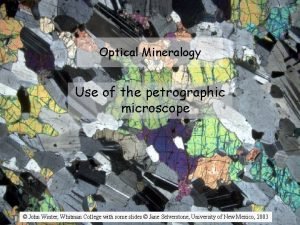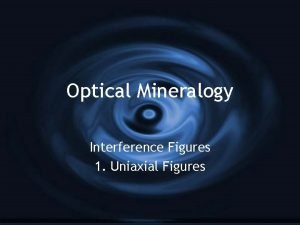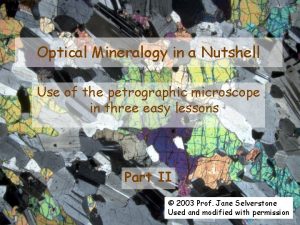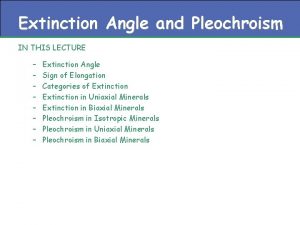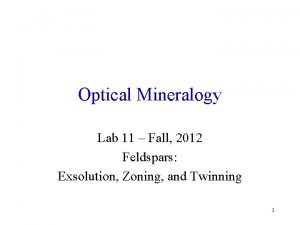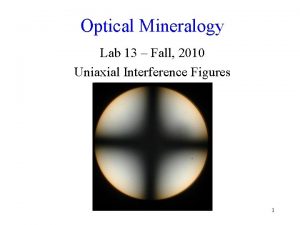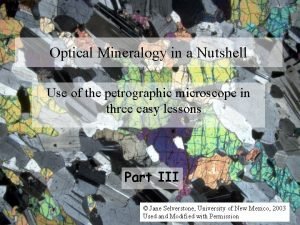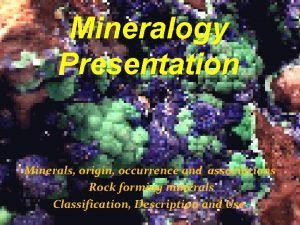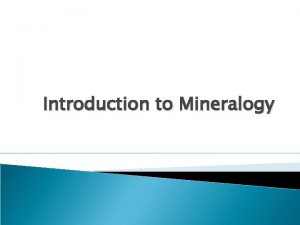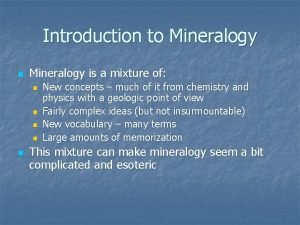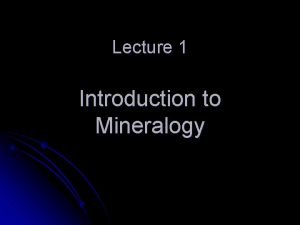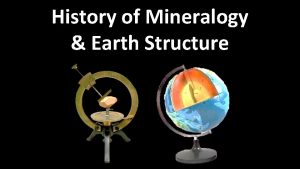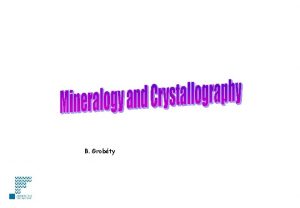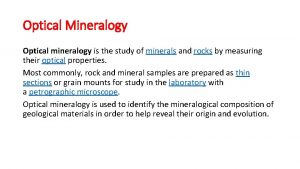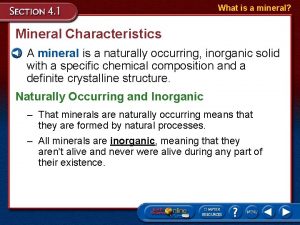Introduction to Mineralogy Introduction of Mineral Mineral are









- Slides: 9

Introduction to Mineralogy

Introduction of Mineral “Mineral are the basic stuff of the Earth, and their study will always remain at the core of the Earth Science “…. (Frank C. Hawthorne, 1993).

What is a Mineral?

• A Mineral is a naturally occurring • solid substance • With a highly ordered atomic arrangement • A definite (but not necessarily fixed), homogeneous chemical composition. • Mineral are usually formed by inorganic process

Disciplines of Mineralogy • Descriptive Mineralogy • Crystallography • Crystal chemistry • Classification of minerals • Geological Occurrence of minerals

Mineral in our lives • Arsenic – Pesticide • Chalcocite – Electrical application • Cinnabar – Drug of immortality • Uranium – Nuclear weapon • Diamond, Queen Mother’s Crown, • Egyptian Gold • Halite- refined salt • Calcite-Gypsum • And so on……

Naming of minerals • • • Physical properties Chemical properties Name after a locality A public figure A mineralogist, (by the person who first discover) For Examples Albite latin albus (white) base on colour Rhodocrosite – Rhudon (rose) Chromite – chrome Pyrite – pyros (fire) Franklinite – Franklin Silimanite – Prof Benyamin Siliman (Yale)

Mineralogy as important to other fields • • • Petrology Geochemistry Meteoritic and Planetary studies Economic Geology Engineering Biology Forensic Geology Geophysics Inorganic Chemistry Paleontology Structural Geology and Tectonics

History of Mineralogy • The modern study of mineralogy was founded on the principles of crystallography (the origins of geometric crystallography, itself, can be traced back to the mineralogy practiced in the eighteenth and nineteenth centuries) and to the microscopic study of rock sections with the invention of the microscope in the 17 th century. • James D. Dana published his first edition of A System of Mineralogy in 1837, and in a later edition introduced a chemical classification that is still the standard. • X-ray diffraction was demonstrated by Max von Laue in 1912, and developed into a tool for analyzing the crystal structure of minerals by the father/son team of William Henry Bragg and William Lawrence Bragg • More recently, driven by advances in experimental technique (such as neutron diffraction) and available computational power

